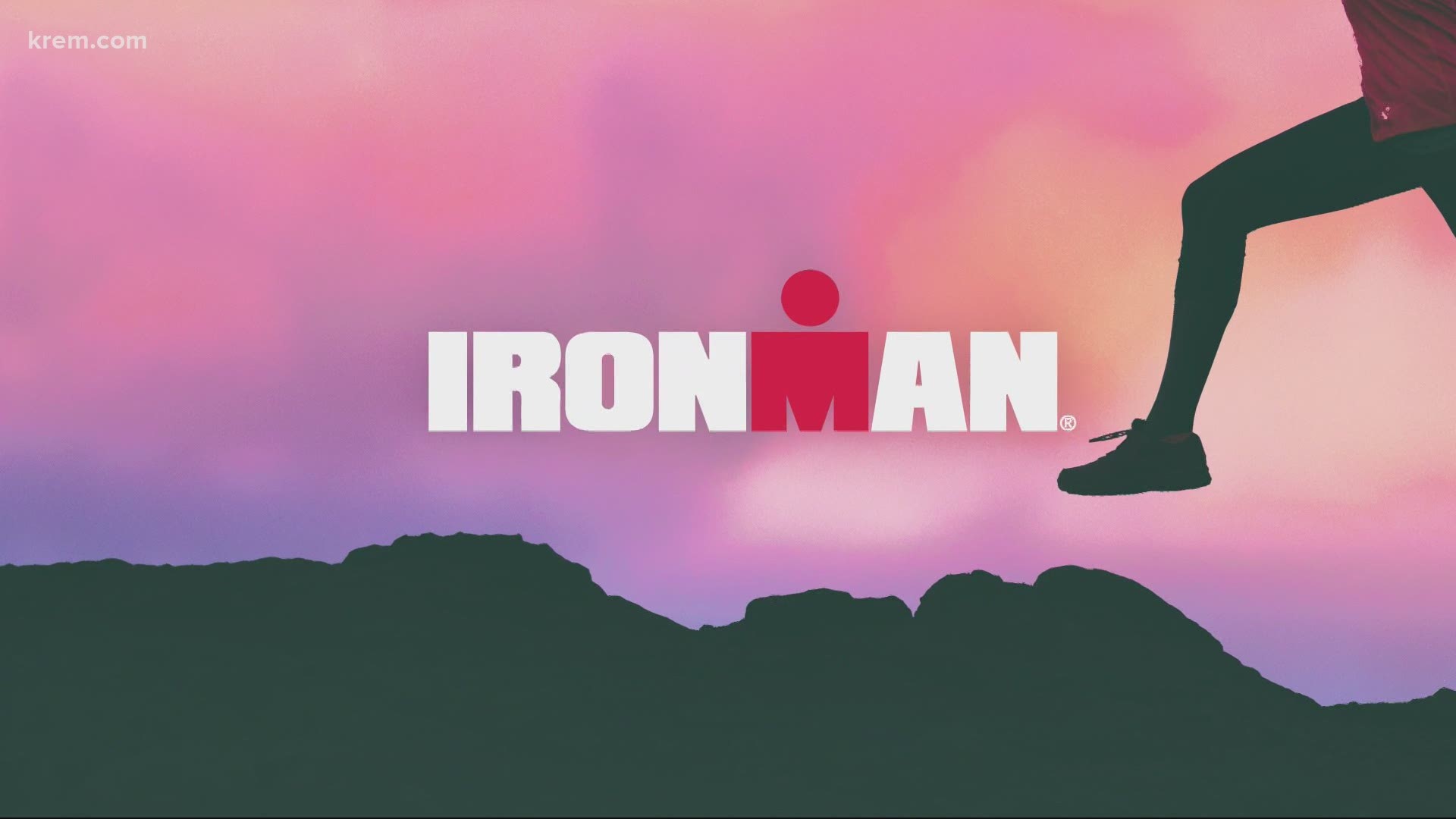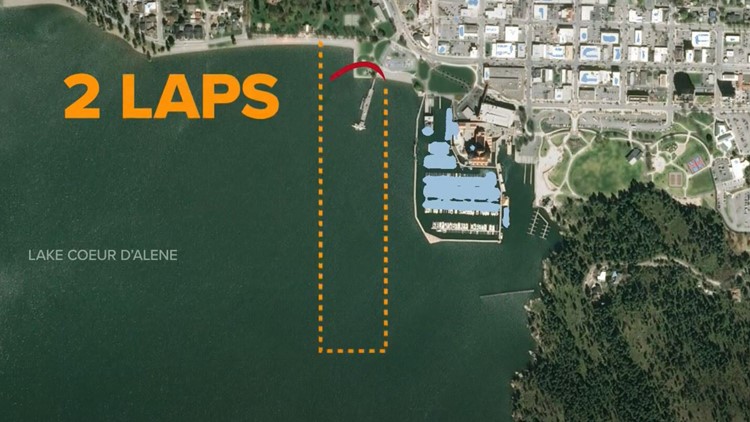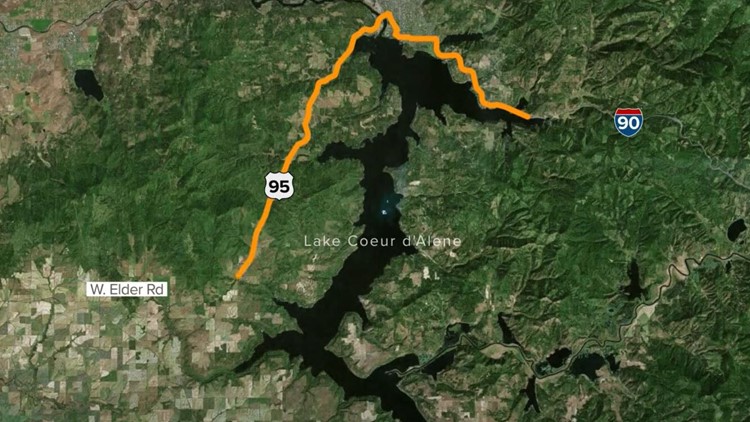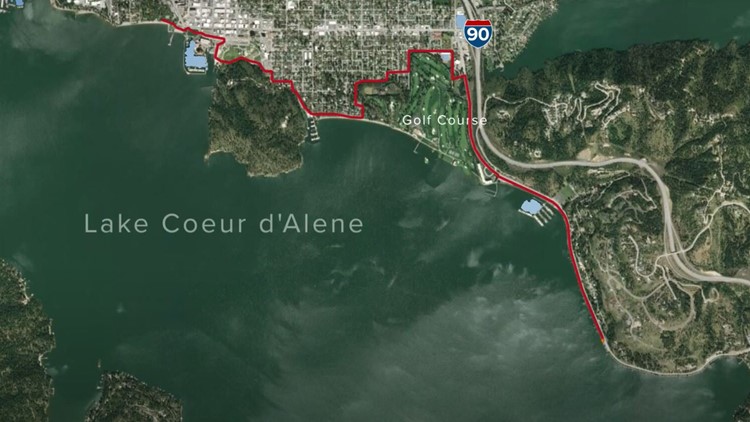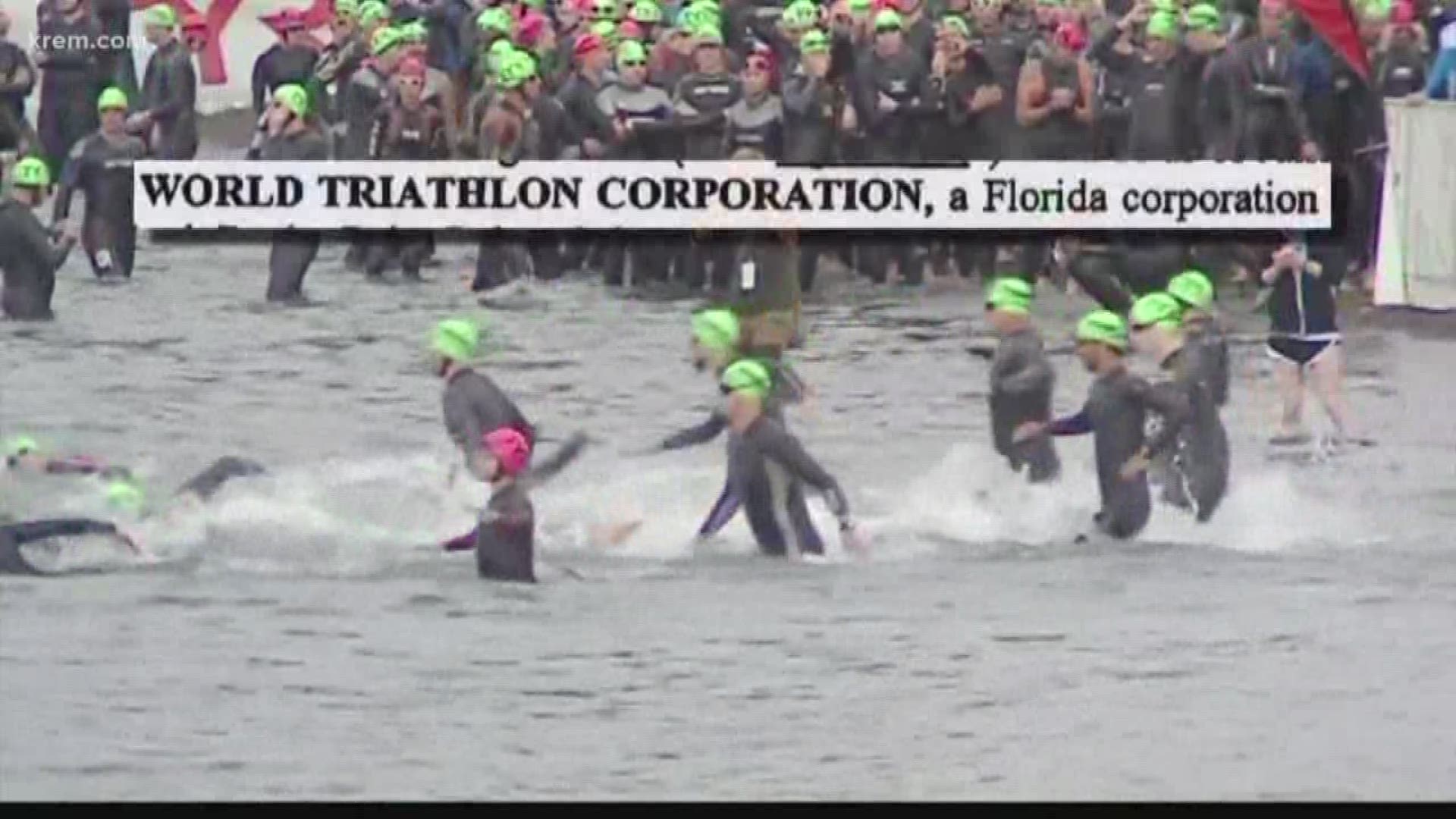COEUR D'ALENE, Idaho — The full Ironman will return to Coeur d'Alene on Sunday for the first time since 2017.
The usual half Ironman was supposed to take place last year before being canceled because of the pandemic. This year, over 3,000 athletes are registered for the race. Right now, all of the entries are filled. There is a waitlist that athletes can join. Ironman organizers predict it is the biggest race ever held in Coeur d’Alene.
The first Ironman in Coeur d'Alene was held in 2003. The triathlon remained in the lake city until 2017. After this, A half Ironman was added in Coeur d'Alene in 2016 and 2017. Only Ironman 70.3 Coeur d'Alene was held in 2018 and 2019.
There are officially winners of Ironman CDA 2021. Sam Long came in first place becoming the pro men's champion while Carrie Lester came in first place as the pro women's champ. Her total time was 8:54:51.
Here are the latest updates from the event:
Here is everything you need to know about Ironman CDA.
General facts
The full Ironman triathlon race is a total of 140.6 miles. The swim on Lake Coeur d'Alene is 2.4 miles, then a 112 bike ride along the lake and down Highway 95. It finishes with a marathon through downtown Coeur d'Alene.
The Lake City is a popular venue for the famous event. According to organizers, the venue has been rated 94.1% in satisfaction. It is one of Ironman's highest ratings. The race will have the categories: Professional, Age Group, and Physically Challenged Open Division. The relay or team option is not available at this race.
Participants have 17 hours to finish the triathlon. Throughout the event, there are time cut-offs for each leg, according to Ironman rules and regulations. After an athlete crosses the start line for the swim they have 2 hours and 20 minutes to finish. If they do not get to the cycling portion before then, they receive a 'did not finish' or DNF. The bike course will close 10.5 hours after the last athlete enters the water. The finish line closes 17 hours after the final athlete enters the water.
Any person who completes the triathlon becomes an 'Ironman.' It is one of the most difficult one-day sporting events in the world. Of the more than 3,000 entries, 150 athletes will qualify for the Ironman World Championship in Kailua-Kona, Hawai'i.
The course
Let's take a look at the course.
The first leg of the race is a 2.4-mile swim across the lake. Swimmers will take off from City Park and swim two laps along the boat docks outside of the Coeur d'Alene Resort.
After athletes make it back to the beach, they will transition to the bike course. Athletes will ride 112 miles on a route through downtown and along U-S 95.
The last leg before the finish line is a marathon run through the city. Runners will start near McEuen Park and run east along the centennial trail. The course will end with an iconic and downhill finish on Sherman Avenue downtown.
2021 Coeur d'Alene Ironman: The Course
Volunteers
The volunteers of the race are almost as important as the people who compete. It takes nearly 3,000 volunteers to run the event. At the moment the event is still severely understaffed, according to the Director of Volunteers Michelle Haustein.
Throughout the years, the volunteers in Coeur d'Alene have become just as much a part of the event as the athletes. Known for their themed tents, banana peels, and the hot broth they give to athletes on the go. They are rewarded with t-shirts and prizes as volunteers are essential to help with the whole process.
There are a few sections that still need plenty of volunteers. Right not there are plenty of open volunteer spots are the bike aid stations. Non-profits and groups can earn grants by volunteering together.
In 2019, WTC/Ironman Foundation contributed back to area nonprofits and organizations with approximately $80,000, according to event organizers.
The sheer amount of athletes and people in Coeur d'Alene means crowd control also needs help, so anyone interested in signing up can find available spots on the Ironman website. They can also email Haustein at imcoeurdalene@ironmanvolunteers.com.
With a race that lasts for hours, there are different time slots and even days leading up to the race that can be volunteered.
Road closures
The Ironman takes over the entire town of Coeur d'Alene. There are expected to be closures the weekend of the event. The closures for 2021 have not been posted by the city yet. During the last Ironman in 2017 here is what the closures looked like:
Sherman Avenue was closed before the race. It went from 1st Street to Second Street. It was closed from Saturday morning to Sunday evening.
On the day of the race, there were a number of road segments that were closed. They were closed from 7:30 a.m. to 3:40 p.m.
Here are the streets:
- E. Lakeshore Drive 11th Street to 15th Street
- Front Street 2nd Street to 5th Street
- 15th Street E. Lakeshore Drive to Ash Street
- Ash Street 15th Street to 14th Street
- 14th Street Ash Street and Lost Avenue
- Lost Avenue 14th Street to 17th Street
- Young Avenue 8th Street to 9th Street
- 17th Street Lost Avenue to Young Avenue
- Young Avenue 17th Street to 19th Street
- 19th Street Young Avenue to Mullan Avenue
There were also a number of congested roadways in the area. The stretch of US Highway 95 used for the bike race was impacted. The roadway remained open but traffic was delayed due to flaggers on Mission Base Road.
Speed limits on US95 were reduced to 45mph during race hours and parking on the shoulder was prohibited. There were also wide lane restrictions in place.
Here is a photo of the restrictions from 2017 courtesy of the CDA police department.

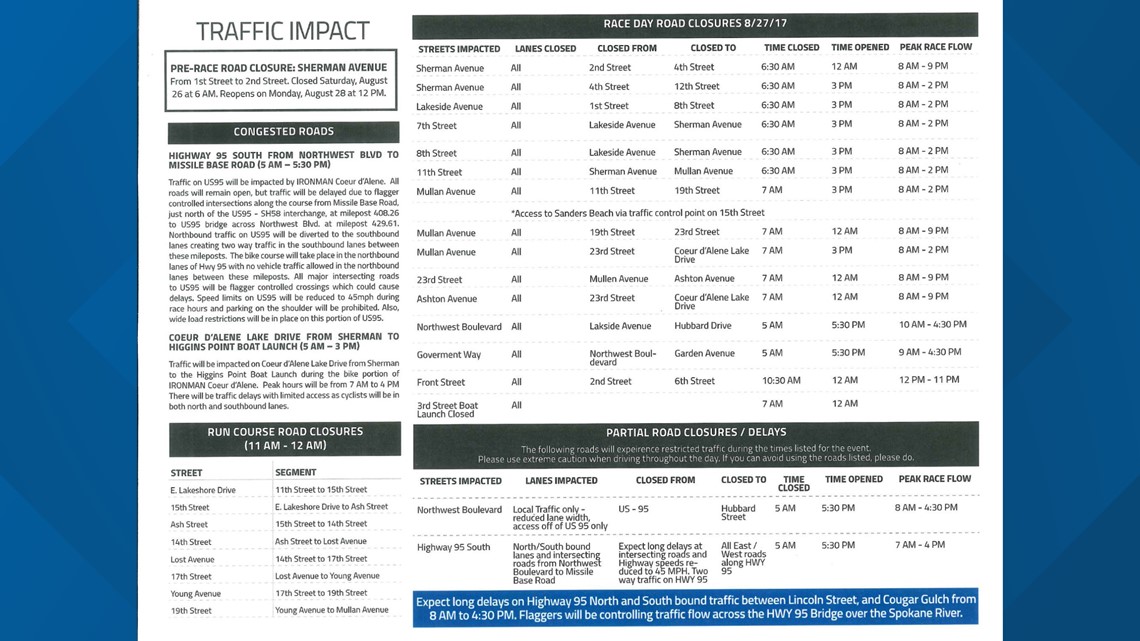
COVID-19 Protocols
There have not been COVID-19 restrictions in Kootenai County for most of 2021. The Ironman will have a check-in screening. This is how the screen is described in the athlete guide.
1. Based on the updated guidance from the Centers for Disease Control and Prevention (CDC) and in line with local health guidance from the city of Coeur d’Alene, Idaho Health Department, fully vaccinated athletes, volunteers, vendors, media and staff will no longer be required to wear face coverings around IRONMAN venues. One exception to this is medical volunteers, who will still be required to wear a face-covering in IRONMAN event medical tents.
2. Athletes need to have Active QR Codes and Photo ID ready to begin the screening process.
3. Be prepared to follow physical distance markings.
4. Athlete Check-In is for ATHLETES ONLY, no friends or family
Economic impact
According to event organizers, in years past Ironman races that had over 3,000 participants enjoyed an estimated economic impact of between $7 and $8 million in new dollars.
When contracts for the 2021 full Ironman were being figured out by the city, KREM2 looked into how much the event costs the city.
In earlier contracts, it specified the CDA Chamber of Commerce had to pay a $55,000 sponsorship fee in order to host the full Ironman. In the new contract, it was proposed to raise to $65,000.
The World Triathlon Corporation (WTC), which owns Ironman races, would get accommodation from the city in the contract. As part of the agreement, the city had to also shoulder other financial responsibilities including repairing potholes on the racecourse and coordinate law enforcement and traffic control. The city and the chamber had to also help promote the event.
It was WTC’s responsibility to plan and conduct the race and provide certain race equipment and supplies. For a full race, the company would donate $50,000 to one or more local nonprofits.

